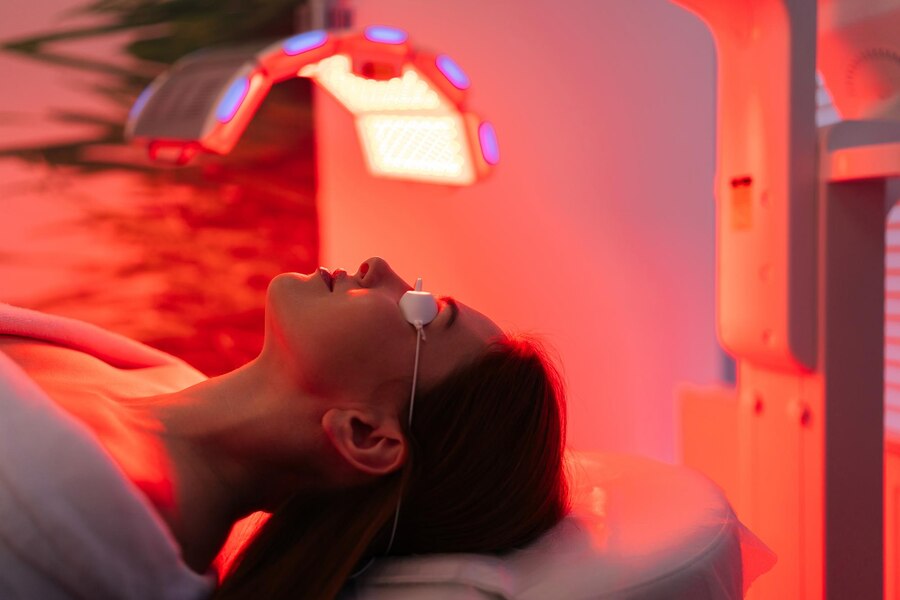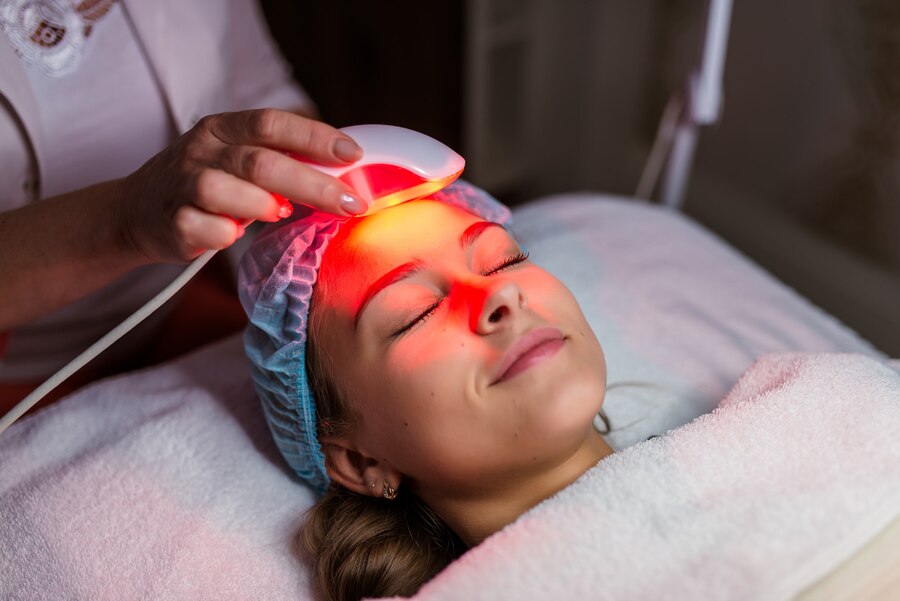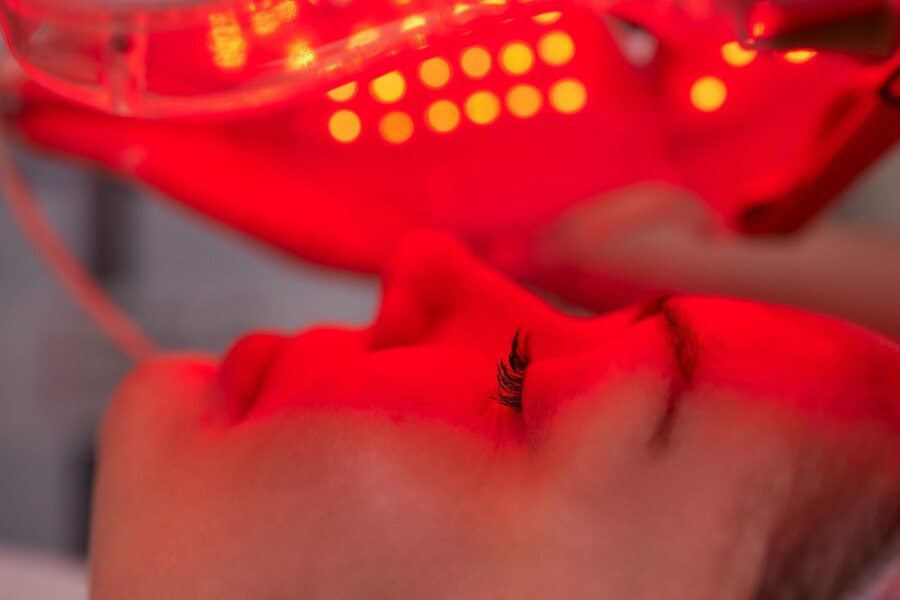What Is Red Light Therapy & What Are Its Main Benefits?
In recent years, red light therapy has emerged as a popular holistic approach to improving health and well-being. Also known as low-level laser therapy (LLLT) or photobiomodulation (PBM), this non-invasive treatment involves exposing the body to red or near-infrared light, which is believed to stimulate cellular function and promote healing. From skin care to pain management, the applications of red light therapy are vast and varied, backed by a growing body of scientific research.
Contents
Understanding Red Light Therapy: How Does It Work?

At its core, red light therapy works by delivering specific wavelengths of light to the body’s tissues. These wavelengths, typically in the range of 600 to 1000 nanometers, penetrate the skin and are absorbed by cells, where they trigger a cascade of biological responses. One key mechanism is the stimulation of mitochondria, the energy powerhouses of cells, which leads to increased production of adenosine triphosphate (ATP), the molecule responsible for storing and transporting energy within cells. Sounds quite complicated right? Here is red light therapy explained in simple terms: it’s a form of treatment that uses specific wavelengths of red light to promote healing and improve skin condition.
Additionally, red light therapy is thought to modulate various cellular processes, including inflammation and oxidative stress, while also promoting the release of nitric oxide, a molecule that improves blood flow and enhances tissue oxygenation. These effects can have far-reaching implications for overall health and wellness.
Early Discoveries And Milestones
The foundations of red light therapy can be traced back to the pioneering work of Hungarian physician Endre Mester in the 1960s. Mester, while conducting experiments on the effects of laser light on tumor growth in mice, made a serendipitous discovery. He observed that low-power laser irradiation not only failed to induce cancerous growth but also appeared to stimulate hair growth and wound healing in the irradiated areas.
Mester’s groundbreaking findings laid the groundwork for further research into the therapeutic effects of low-level laser light. Throughout the 1970s and 1980s, scientists around the world began investigating the mechanisms underlying these effects and exploring potential applications in various fields, including medicine, dermatology, and sports medicine.
Development And Refinement

As research into red light therapy advanced, so too did the technology used to deliver therapeutic light. Early experiments primarily utilized low-power helium-neon (HeNe) lasers, which emitted red light at wavelengths around 632.8 nanometers. Over time, researchers began to explore the therapeutic potential of light at different wavelengths, including near-infrared wavelengths ranging from 700 to 1000 nanometers.
Advancements in light-emitting diode (LED) technology also played a significant role in the evolution of red light therapy. LEDs offer several advantages over traditional laser sources, including lower cost, greater versatility, and the ability to emit light across a broader range of wavelengths. This led to the development of LED-based red light therapy devices that could deliver targeted light therapy to specific areas of the body.
Clinical Applications And Research
As red light therapy gained traction, researchers began conducting clinical trials to evaluate its effectiveness for various medical conditions. In dermatology, studies demonstrated the ability of red light therapy to promote wound healing, reduce inflammation, and improve the appearance of scars and wrinkles. In sports medicine, athletes and coaches turned to red light therapy to accelerate recovery from injuries and enhance performance.
The therapeutic potential of red light therapy also extended to chronic pain management, with studies suggesting its efficacy in alleviating pain associated with conditions such as arthritis, fibromyalgia, and musculoskeletal injuries. Additionally, researchers explored the use of red light therapy for neurological conditions, such as traumatic brain injury, stroke, and neurodegenerative diseases, with promising results.
The Benefits Of Red Light Therapy

One of the most well-known applications of red light therapy is in skin care. Research suggests that exposure to red and near-infrared light can stimulate collagen production, improve skin elasticity, and reduce the appearance of wrinkles and fine lines. Furthermore, red light therapy may help alleviate acne by targeting the bacteria responsible for breakouts and reducing inflammation in the skin.
Beyond skincare, red light therapy has shown promise in various other areas:
- Pain Management: Many individuals turn to red light therapy to manage chronic pain conditions such as arthritis, fibromyalgia, and back pain. By promoting tissue repair and reducing inflammation, red light therapy can offer relief from discomfort and improve mobility.
- Muscle Recovery: Athletes and fitness enthusiasts often use red light therapy to accelerate muscle recovery after intense workouts or injuries. By enhancing cellular repair processes, red light therapy can help reduce muscle soreness and speed up recovery times.
- Hair Growth: Some studies suggest that red light therapy may stimulate hair growth in individuals experiencing hair loss or thinning. By increasing blood flow to the scalp and promoting the proliferation of hair follicle cells, red light therapy offers a non-invasive option for addressing hair loss concerns.
- Mood Enhancement: There is emerging evidence to suggest that red light therapy may have positive effects on mood and mental well-being. By influencing neurotransmitter levels and reducing inflammation in the brain, red light therapy could potentially help alleviate symptoms of depression and anxiety.
Safety And Considerations
One of the significant advantages of red light therapy is its excellent safety profile. Unlike more invasive treatments, such as surgery or pharmaceutical interventions, red light therapy is non-toxic and non-invasive, with minimal risk of side effects when used as directed. However, it’s essential to use caution when purchasing red light therapy devices and ensure they meet safety standards and regulatory requirements.
It’s also worth noting that while red light therapy offers numerous potential benefits, individual responses may vary. Factors such as the specific condition being treated, the duration and frequency of treatment sessions, and the quality of the light source can all influence outcomes. As with any therapeutic intervention, consulting with a healthcare professional is advisable, particularly for individuals with underlying health conditions or those seeking treatment for specific medical concerns.
Conclusion
Red light therapy represents a promising approach to improving health and well-being across a range of applications. From skincare and pain management to muscle recovery and mood enhancement, the benefits of red light therapy are diverse and compelling. With its non-invasive nature and excellent safety profile, red light therapy offers a gentle yet effective way to harness the power of light for healing and rejuvenation. As research in this field continues to evolve, red light therapy stands poised to play an increasingly prominent role in holistic health practices worldwide.
Read Also:
- Helpful Tips to Improve your Posture and Reduce Back Pain
- 3 Things To Consider Before Getting Liposuction
- How To Start A Private Therapy Practice
- Oxyelite Pro Reviews, Ingredients, Benefits, Side Effects, Cost & Is It Safe?



